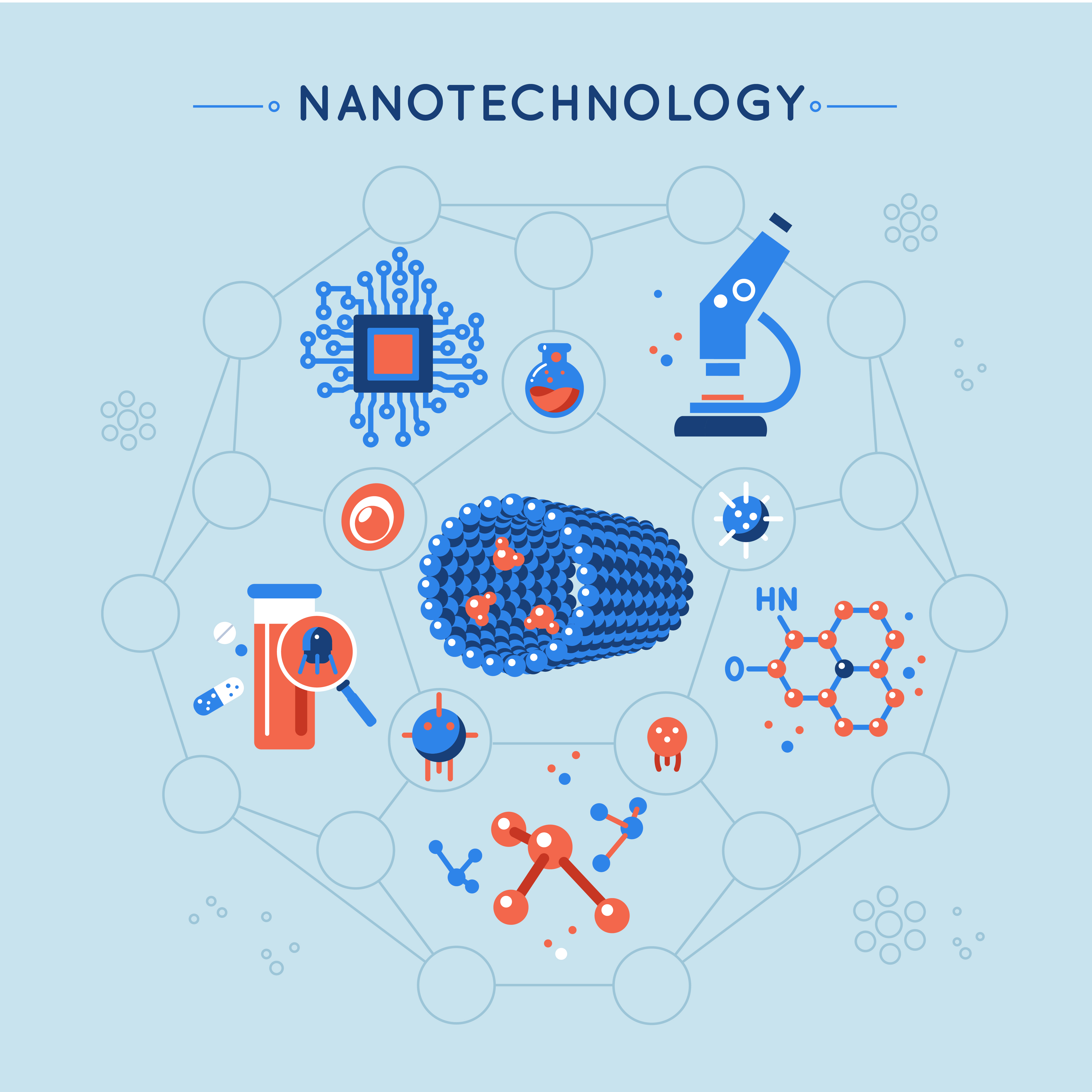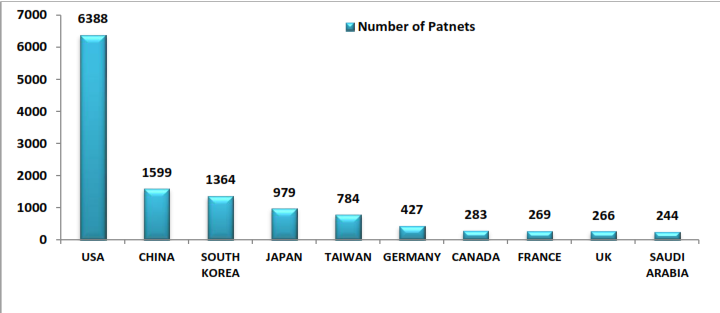NANOTECHNOLOGY AND ITS TREND IN IP
Let’s start with understanding, Nano-Technology.
Simply put, Nanotechnology is a science that operates at an extremely small scale, as it uses the size of a so-called nanoscale, to put things in perspective let’s understand how small is “nano”, It is approximately between 1 and 100 nanometers, or 1 to 100 billionths of a meter. Yes, you cannot see it with the naked eye and yes it is that small. Or you can interpret it as “shaping, understanding and combining matter at the atomic and molecular scale are called nanotechnology. Nanotechnology is so broad that it encompasses medicine, architecture, medicine, engineering, computing & robotics, and all of those at this scale are called the nanoscale.

As of now, there are two known main ways of applying nanotechnology so far: The first one is called the “top-down approach”; which means that the structures are made smaller and smaller until they reach a nanometric scale. The second approach is called the “bottom-up approach”, by which the elements at the nanoscale are chosen and assembled in order to form some sort of matter or mechanism. This way of manipulating matter at the atomic level obviously bears the potential for enormous developments. Nanotechnology is one of the most prominent examples of the future of the technology itself and it raises high expectations in a wide range of areas affecting daily life.
According to the experts, in day-to-day life Nanotechnology could and is contributing in:
1. Energy generation (efficient engines, efficient turbines, etc.)
2. Electrical and electronics.
3. Medicinal use like treatment methods and pharmaceutical Industry.
4. Manufacturing Industry.
5. Supercomputers and Computers in general.
6. Space and exploration sector.
7. Environmental benefits (improved nutrition, water purification, etc.)
8. Defense sector.
Nanotechnology offers the potential for new and faster kinds of computers, more efficient power sources, and life-saving medical treatments. But the potential disadvantages may include economic disruption and possible threats to security, privacy, health, and the environment as well. You realize that this technology is not like the one we’ll see in the future, we are already using it. Some of these examples may clear it up: nanoparticles of silver are used to deliver antimicrobial properties in hand washes, bandages & socks, and zinc or titanium nanoparticles are the active UV-protective elements in modern sunscreens.
You probably got the gist of what Nanotechnology is; let’s see how it is performing in the IP market:

The following data reflects the trends in Patents (captured by USPTO only). We can clearly see that the number of patents filed between 2021 and 2022 is showing very positive and promising growth in the market. Experts say that more and more companies are joining the market, and companies like IBM, Xerox, and Samsung (currently the major players) are competing for the number one spot. But these patent filings for nanotechnology are not only limited to tech companies but educational institutes like the University of California, MIT, and IIT and Industries related to manufacturing, servicing, medicinal treatment, pharmaceutical, space, aviation, architecture, printing, textile, etc all are working on it.
Experts say that with the market being what it is, the number of patents and the companies interested in the technology is going to increase only. VLS (Virtue Legal Services) with its experienced, skilled, and innovative team are striving to search for the result that you are so eager to find. So let’s skip the wait and start today.
We at VLS (Virtue Legal Services) have an experienced, skilled and innovative team who are desperate to find the results that you are looking for in the world of 5G and telecommunications, Be it research, filling, or drafting, we provide all the services at competitive pricing as well. So why wait, connect with us.
Post a Comment: